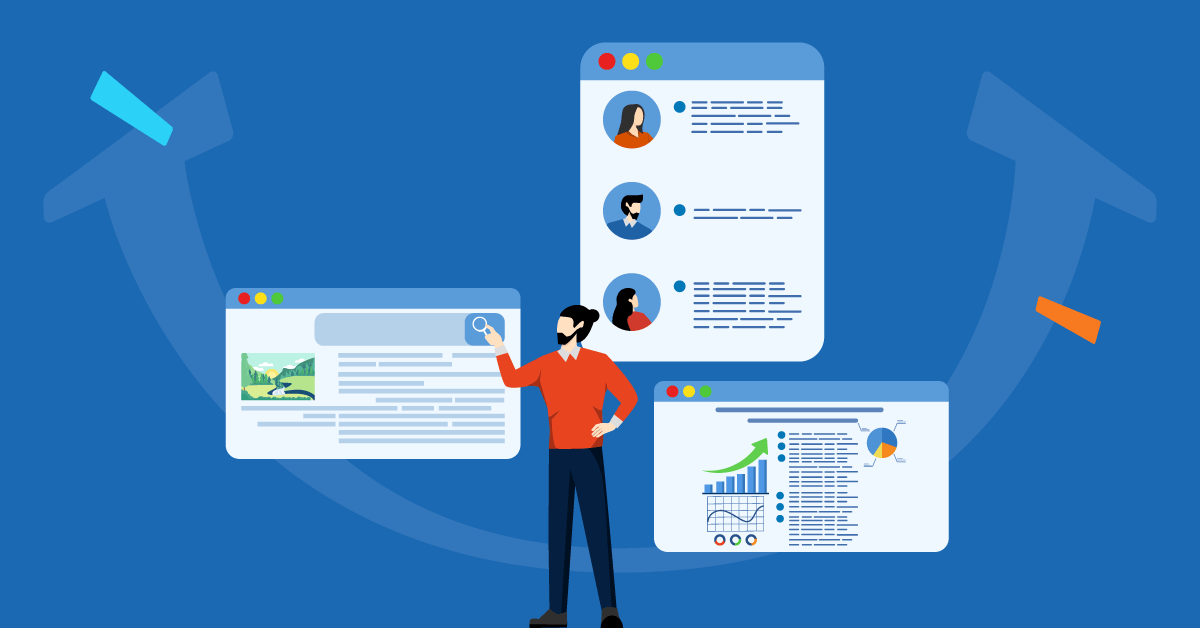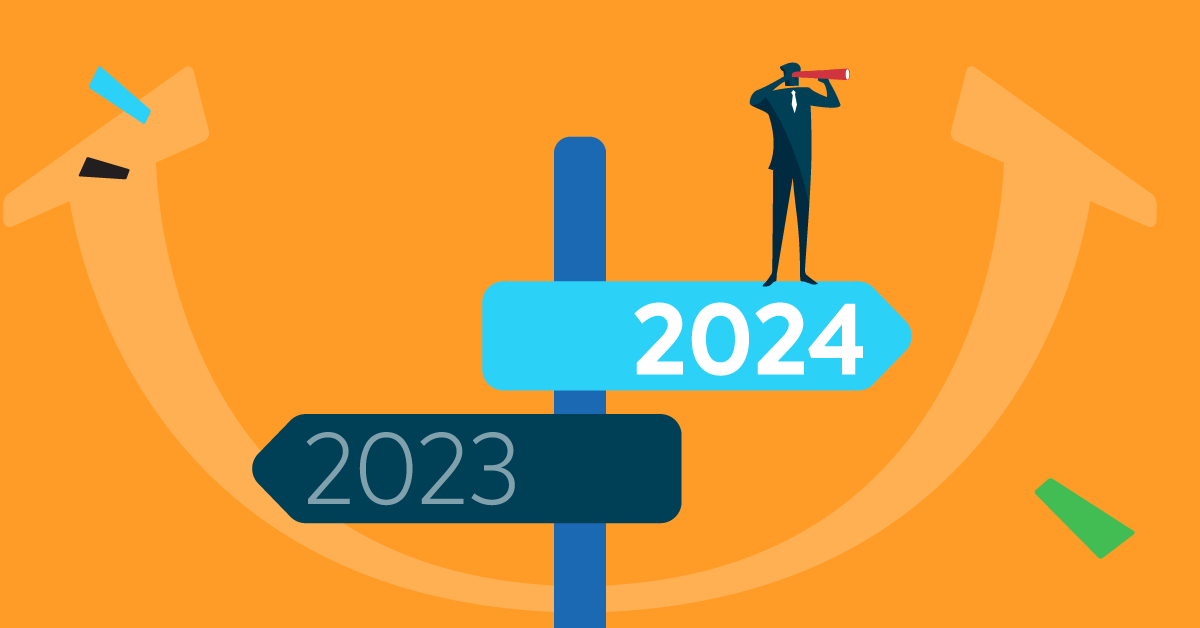It’s 1995. The Human Resources department at Sunrise Innovations is buried deep in paperwork. Desks and chairs take second place to rows of sturdy metal cabinets that line the walls of the team’s office. The lifeblood of the department (and the organization), each cabinet contains meticulously organized files—one for each employee. And each file is crammed full of documents. From job application and resume to performance evaluations and training records.
Tasked with taming the ever-growing volume of data, spreadsheets are the HR team’s trusty companions. Payroll calculations, attendance records, and even employee grievances are all diligently recorded, updated, and cross-referenced across a vast sea of cells. Communication also relies on the personal touch. Letters are hand-crafted, printed, and then posted. And then recorded as ‘sent’ on the relevant spreadsheet. Reports, too, take time to manually compile and create.
As the years roll by, the company grows. And the HR department buckles under the strain. Filing cabinets start to overflow. Once-meticulous and well-organized spreadsheets become confused. Data gets lost and errors creep in. Administrative tasks become all-consuming. Onboarding becomes unmanageable. And strategic HR initiatives all but disappear.
Luckily, time and technology have moved on. Most larger or enterprise organizations can’t function these days without a robust digital HR toolkit to streamline processes, centralize data, and automate routine tasks. But for startups and many smaller-scale businesses, the above scenario might still feel familiar. Keen to keep resourcing and costs at a minimum early on, there comes a time when efficiency and scalability demand a different approach. Investment in an HRIS (human resources information system) is often the next natural step. But knowing how to choose the right HRIS isn’t so straightforward.

How can HR make more time for people? Put processes and platforms in place first
There’s a common misconception that HR professionals spend all their time talking to people. Of course, the “human” element of HR is fundamental. And HR professionals need to be available to answer employees’ questions, identify and solve issues, and keep personal engagement levels high. But that’s not all they do. Far from it. In essence, HR teams are mediators between a business and its people. Which means syncing up and balancing out the needs of both.
At the heart of this is data. This is where an HRIS comes into its own.
Staying secure
For every employee on your payroll comes a wealth of information. This information reveals a lot about each individual. And being in possession of that personal data comes with huge ethical and legal responsibilities. Of course, the more people you manage, the greater (and harder) that responsibility becomes.
Which is where the need for technology comes in. HRISs keep data secure. Self-service versions (where employees input their own data) also ensure that GDPR requirements are automatically met.
A single source of truth
Whether it’s contracts, resumes, equal ops forms, or onboarding guides, HR teams can’t function without (digital) “paperwork.” And for each piece of paperwork there are issues of storage, access, and integrity to consider. Collecting, organizing, and protecting large amounts of documentation and data manually takes time. It also takes effort, focus, and concentration. And even the most dedicated and capable employees can’t sustain all of those indefinitely.
Technology solves the potentially risky business of document management by offering a centralized solution with inbuilt version control functionality. Plus, it offers a consistent approach to managing data. And by automating processes reduces any room for error.
You can’t manage what you can’t measure
HR teams need to make tactical decisions and be able to justify, measure, and track them. Without (accurate) data, those decisions become meaningless. And potentially damaging to individuals and the stability of an organization as a whole. With an HRIS, key metrics such as eNPS, turnover, retention rates, time to hire, and quality of hire can be captured consistently. The latest data can be accessed in a click. And downloaded into shareable reports.
Business as usual
Every day, HR teams have to coordinate a range of activities that keep businesses functioning. From onboarding new employees to advertising for new hires, recording sick leave to sharing PTO updates, processing payroll and expenses to managing conflicts, and overseeing training, the list goes on. And for each of those processes there’s data to be recorded, saved, and shared. Without an automated solution, these day-to-day operations leave HR teams little time for anything else.
What to look for in an HRIS
Not all HRISs are made equal. Yes, the main principle is the same for all of them: to act as a central database for HR admin and employee data. But there are a host of differentiating factors to consider if you want to choose the right HRIS. Some of these will be deal breakers for you. Others less so. Either way, the more you know about your organization’s current and future needs, the easier it will be to find your best-fit solution.
Usability
In an ideal world, anyone in your company should be able to use an HRIS without much (if any) guidance, training, or hand-holding. But some systems are more intuitive than others. To optimize user adoption, it’s important to assess usability when you’re about to choose HRIS software. Compare this with the level of tech literacy across your organization. And against your capacity to provide support internally. Consider usability across different user types, too. Is there a clear dashboard that HR admins can customize? Can new hires input their employee data without needing help or explanation? Employees and HR professionals alike should find it easy to navigate through the system, complete tasks efficiently, and access relevant information without any struggles.
Reporting
We’ve talked about the deep link between HR and data. Well, reports are the glue that binds both together. Whether it’s payroll summaries, performance analytics, a presentation to the board, or a point-of-discussion for internal reviews, a quality HR system should offer a wide array of customizable reports. Which, as well as looking “pretty,” should be quick to create and share on the spot.
Self-service functionality
Giving employees the power to manage their own HR-related tasks brings big benefits. It relieves the burden on HR professionals. It also promotes better levels of data accuracy. Most HRISs will have self-service capabilities. But if you want to choose the right HRIS, it’s still important to review the level of functionality to check it meets your expectations and requirements.
Customization
There’s no one-size-fits-all model when it comes to business. And your HRIS should reflect the unique structure, needs, and attributes of your organization. From configuring workflows to adapting forms and fields, customization keeps your HR platform and your processes in sync. This flexibility means you can keep pace with changes within your own business, too. Again, if you’re about to choose HRIS software, check the scope and range of customization options and compare these with your needs.
Globalization
If you’re operating internationally, you’ll want to choose HRIS software that accommodates the complexities of a global workforce. For example, does it support multiple languages, currencies, and compliance requirements? Are there features designed around the localization of content, time zone adjustments, and other regional differences? If you’re not running a global operation but have plans to expand in the future, it’s worth asking these questions now. This way, you’ll ensure you choose the right HRIS to support you as you expand.
Pricing structure
Budget is obviously a key consideration for any HRIS. Yes, you want to choose the right HRIS, but the price needs to be right, too. So, explore the pricing structure options available. Is pricing based on the number of users, a subscription model, or annual payment? Or a combination of all three? Look for discounts and flexibility around plans. And, again match these options up with your requirements now and in the future. Are you hiring at scale soon? Will your user numbers increase or decrease? Do you have peaks and troughs in terms of workforce requirements? Either way, ask these questions before you commit.
Technical constraints
When you’re about to choose HRIS software, you need to decide whether to opt for an internally or remotely-hosted product. There are benefits to both options. The first comes at a higher cost but can be cheaper in the long run. The second is quicker and cheaper to implement but, depending on your pricing model, can incur additional costs if your usage grows or changes. Either way, the determining factor is usually your own existing tech infrastructure and IT support capabilities. For example, do you have the necessary server space and staffing resources within your organization? Or will you be relying on your vendor to provide both of these?
Support
However well-designed an HRIS, your users and your tech team are likely to have questions. And to need guidance from time to time. In order to choose the right HRIS for you, evaluate the type and level of support on offer. What self-service resources are available? How responsive (and how accessible) is their customer support team? Do they just provide help with troubleshooting? Or are there resources (webinars, tutorials, and online guides) designed to help users dig deeper into specific features and functionality? Use insights you’ve already gathered about the tech capabilities of your employees and balance the level of support needed against that.
An end-to-end solution: HR integrations vs native apps, what to choose and when
The typical HR toolkit is vast and reflects the range of responsibilities that fall within the team’s wide remit. From recruitment and onboarding to training and payroll, to function efficiently, HR professionals need platforms that support all of the above. And more. After all, who knows what’s around the corner? Future needs might also demand a performance appraisal system, survey application, or attendance tool, for example.
What sets some HRIS platforms apart is the ability to support all of the other core functionalities needed for end-to-end Human Resources Management (HRM). Some may offer their own native solutions to a few or all of these activities. Others may integrate with a portfolio of independent third-party providers to offer a more sophisticated level of specialized support. So, how do you know what option/s (if any) to go for? And where should your decision-making process start?
Look to your HRIS first
Usually, the HRIS is the cornerstone of your tech stack and will determine the rest of the software you choose. Since you store a great volume of sensitive data, it’s not ideal to change vendors frequently. So it makes sense to start here and work outwards.
Review your existing tech stack
Of course, chances are you’re already using a couple of different platforms to manage your HR tasks. So you now need to decide if you still want to use them. If the answer’s a definite ‘yes,’ you need to check if your preferred HRIS integrates with them. If you’re not so attached, you could see if there are alternative options. For example, another standalone tool that could be integrated to perform the same function. Or an in-built solution available within the HRIS. If you do decide to switch, have a conversation about the best way to migrate the data.
Check if it’s easy to integrate
Since they handle the same data, it’s essential your different platforms play well with each other. Real integrations, where you click a button and platforms “communicate” with each other, are what you should be looking for.
Help your HR teams handle data effortlessly
Integrate your HRIS software with TalentLMS.
The training platform that users consistently rank #1.
Assess your growth trajectory
When you choose HRIS software, it pays to opt for a platform that can act as a launchpad to greater things. So take time to scope out your HR strategy and company roadmap before you choose your HRIS software.
Understanding your business priorities will help determine what HR integrations you’ll need in your HR toolkit, now and in the future. Let’s see what that might look like in practice.
When to prioritize: Training and onboarding
Let’s say you’re about to onboard high volumes of new hires based in different locations and across different time zones. You need to make sure they’re up-to-speed and up-to-date with your products and procedures. But live, in-person training isn’t an option. In this instance, an HRIS with a sophisticated LMS integration is essential. That way, you can provide consistent and accessible training seamlessly alongside your employee onboarding process.
When to prioritize: Recruitment
Perhaps you’re an established SMB with low employee turnover and a steady and relatively slow hiring pattern. If so, an HRIS with its own basic but effective ATS software may be more than sufficient. But if you’re scaling fast, you’ll want a more sophisticated ATS software system. In that case, it’s best to look for a separate ATS platform that integrates fully and seamlessly with your HRIS.
When to prioritize: Payroll and benefits
Based in Europe but opening an office in the US? The top priority will be to make sure you choose HRIS software that integrates with a US payroll processing system. You’ll also want to be able to create a customized benefits package for your new American employees.
A word to the wise: Choosing HR software is time well spent
Tools don’t just make the HR day-to-day easier. They eliminate errors that can happen with manual data entry. They help with decision-making. And they make you look good to your boss (think detailed reports at the click of a button). So, the better the HR tools you have, the better you’ll be at your job. And choosing the right HRIS is the perfect place to start.
| Tags: hiring,HR,LMS Integration




Leave a Reply